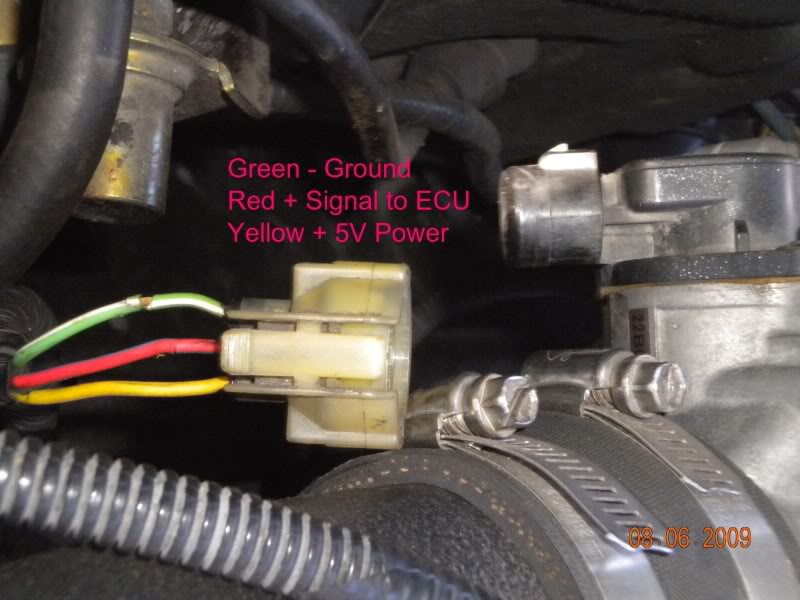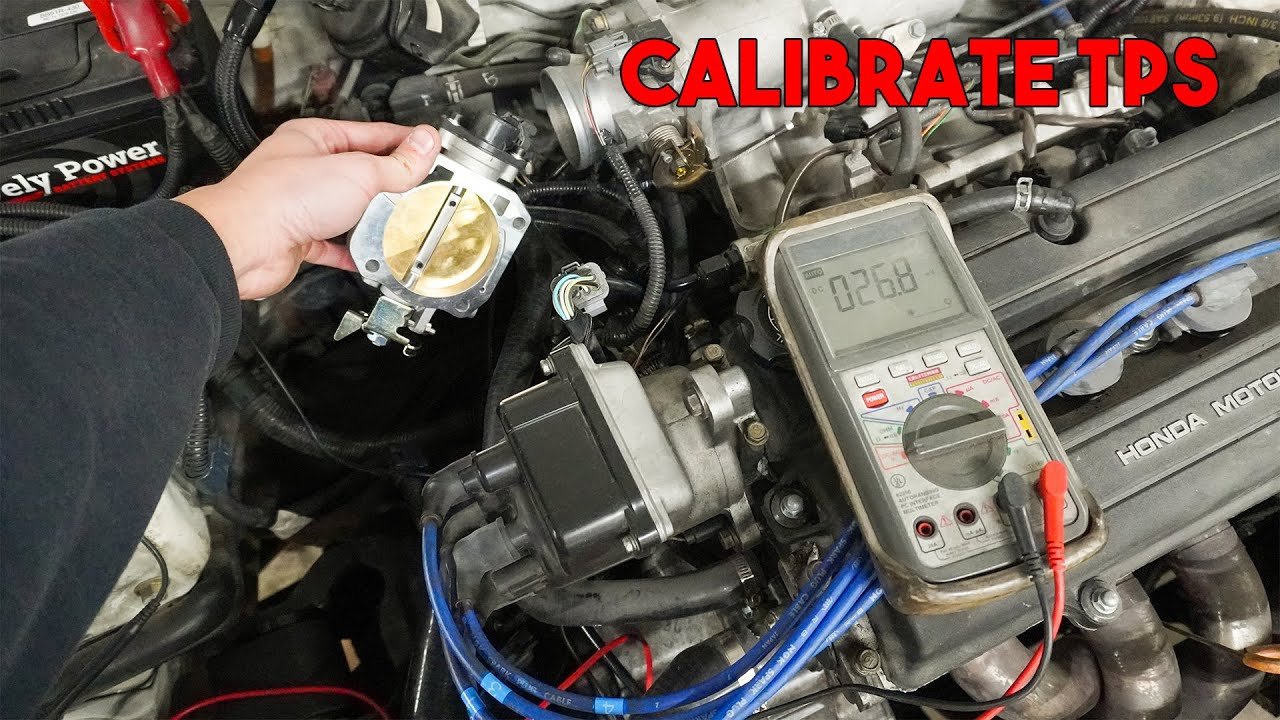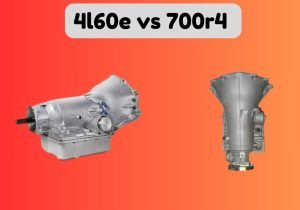To calibrate a throttle position sensor, you need to follow a specific procedure to ensure accurate readings. We will discuss the steps involved in calibrating a throttle position sensor and provide useful tips to help you complete the process successfully.
The throttle position sensor (TPS) is a crucial component of the engine’s fuel management system, as it measures the position of the throttle blade. Calibrating the TPS is essential to maintain optimal engine performance, fuel efficiency, and throttle response. By following the correct calibration procedure, you can ensure that the TPS provides accurate readings to the engine control unit (ECU), allowing for smooth and efficient operation.
In the next section, we will outline the step-by-step process of calibrating a throttle position sensor and provide expert tips to make the task easier. By following these instructions, you will be able to calibrate your TPS effectively, enhancing your vehicle’s overall performance. So, let’s get started!
Contents
- What Is A Throttle Position Sensor?
- Signs Of A Misaligned Throttle Position Sensor
- Preparing For Calibration
- Step-By-Step Throttle Position Sensor Calibration Process
- Tips And Best Practices For Throttle Position Sensor Calibration
- When To Seek Professional Help
- Preventive Maintenance For Throttle Position Sensors
- Frequently Asked Questions On How To Calibrate A Throttle Position Sensor
- Conclusion
What Is A Throttle Position Sensor?
A throttle position sensor (TPS) monitors the position of the throttle in a vehicle. It detects how open or closed the throttle valve is, relaying this information to the engine control unit (ECU). The ECU then uses this data to calculate the appropriate amount of fuel to be injected into the engine.
Calibrating the sensor is crucial to ensure accurate readings and optimal engine performance. Without proper calibration, the TPS may provide incorrect information, leading to issues such as poor fuel efficiency and uneven acceleration. To calibrate the TPS, you will need to follow the specific instructions provided by the vehicle manufacturer.
This usually involves adjusting the position of the sensor to match the voltage levels specified by the manufacturer. Calibrating the TPS on a regular basis is essential for maintaining the overall health and efficiency of your vehicle’s engine.
Signs Of A Misaligned Throttle Position Sensor
A misaligned throttle position sensor can lead to several symptoms that affect engine performance and fuel efficiency. One common sign is an erratic or inconsistent idle speed. The engine may rev up and down without any input from the driver.
Another symptom is a noticeable delay in throttle response. When you press on the gas pedal, there may be a hesitation before the engine starts to accelerate. Additionally, a misaligned sensor can cause surging or jerking during acceleration, as well as a decrease in overall power.
Fuel efficiency may also be compromised, resulting in lower mileage per gallon. It is important to address these symptoms promptly to ensure proper engine operation and optimal fuel consumption. Regularly calibrating the throttle position sensor can help prevent these issues and keep your vehicle running smoothly.
Preparing For Calibration
Preparing for throttle position sensor calibration involves gathering the necessary tools and equipment. Prioritizing safety, it’s important to follow certain precautions. By adhering to these guidelines, you can optimize the calibration process. Remember to keep your sentences concise, with a maximum of 20 words each.
Vary your phrases at the beginning of paragraphs to keep readers engaged. This SEO-friendly content aims to provide a unique, easy-to-understand explanation of how to calibrate a throttle position sensor.

Credit: honda-tech.com
Step-By-Step Throttle Position Sensor Calibration Process
To calibrate a throttle position sensor, start by disconnecting the battery. Locate the sensor, usually found on the throttle body. Identify the adjustable components on the sensor. Adjust the sensor’s position for proper calibration. Reconnect the battery and perform a sensor test to ensure accurate readings.
Following these steps will help ensure the throttle position sensor is calibrated correctly for optimal performance.
Tips And Best Practices For Throttle Position Sensor Calibration
Throttle Position Sensor (TPS) calibration is crucial for optimal engine performance. To ensure accurate readings, follow these best practices. First, handle the sensor with care to avoid any damage during the adjustment process. Next, avoid common mistakes like rushing through the calibration or skipping necessary steps.
Take your time and follow the manufacturer’s instructions carefully. It is essential to have the right tools, such as a multimeter, to accurately measure the sensor’s voltage. Additionally, make sure the engine is warmed up before starting the calibration process.
This will provide more accurate readings. Lastly, test the sensor’s voltage at different throttle positions to ensure consistent results. By following these tips and avoiding common errors, you can calibrate your Throttle Position Sensor effectively for optimal engine performance.
When To Seek Professional Help
Calibrating a throttle position sensor can usually be done on your own, but there are instances where seeking professional help may be necessary. One such instance is when you lack the technical knowledge and experience required for the task. A trained technician has the expertise to ensure accurate calibration, preventing any potential issues that may arise from improper calibration.
Additionally, if you suspect that your throttle position sensor is faulty or malfunctioning, it is best to consult a professional. They have the diagnostic tools to accurately assess the condition of the sensor and determine if calibration or replacement is necessary.
By relying on a qualified technician to calibrate your throttle position sensor, you can have peace of mind knowing that the job is done correctly, optimizing the performance of your vehicle.
Preventive Maintenance For Throttle Position Sensors
Regular maintenance and inspection are essential for maximizing the lifespan of a throttle position sensor. Taking care of this crucial component plays a vital role in the overall performance of the vehicle. By following preventive measures, you can ensure that the sensor functions optimally, avoiding any potential issues that can arise.
It is recommended to conduct regular inspections to identify any signs of wear or damage. Additionally, keeping the sensor clean and free from debris helps maintain its accuracy and efficiency. Proper calibration should also be done to ensure accurate readings and smooth operation.
Taking these preventive measures will extend the lifespan of the throttle position sensor and prevent any unexpected breakdowns or malfunctions.
Frequently Asked Questions On How To Calibrate A Throttle Position Sensor
How Do You Reset The Throttle Position Sensor?
To reset the throttle position sensor, follow these steps carefully. First, disconnect the battery. Next, locate the sensor and remove it. Finally, reinstall the sensor and reconnect the battery.
Does A Throttle Position Sensor Have To Be Calibrated?
Yes, a throttle position sensor does need to be calibrated for optimal functioning.
Do You Have To Reset Computer After Replacing Throttle Position Sensor?
Yes, resetting your computer is necessary after replacing the throttle position sensor.
What Happens When You Unplug Throttle Position Sensor?
Unplugging the throttle position sensor can affect the performance of your vehicle’s engine.
Conclusion
To conclude, calibrating a throttle position sensor is a crucial task for maintaining the proper functioning of your vehicle. By following the steps outlined you can ensure that your sensor is accurately measuring the throttle position and providing the necessary information to your engine control unit.
Proper calibration is essential for optimal engine performance, fuel efficiency, and overall vehicle operation. Regularly checking and calibrating your throttle position sensor can prevent issues such as poor acceleration, stalling, and rough idling. Remember to always consult your vehicle’s manual for specific instructions relating to your make and model.
By taking the time to calibrate your throttle position sensor, you can enjoy a smoother and more efficient driving experience. So don’t neglect this important maintenance task – your vehicle and your wallet will thank you.
Affiliate Disclosure: As an Amazon Associate, I earn from qualifying purchases made through links on this site.








